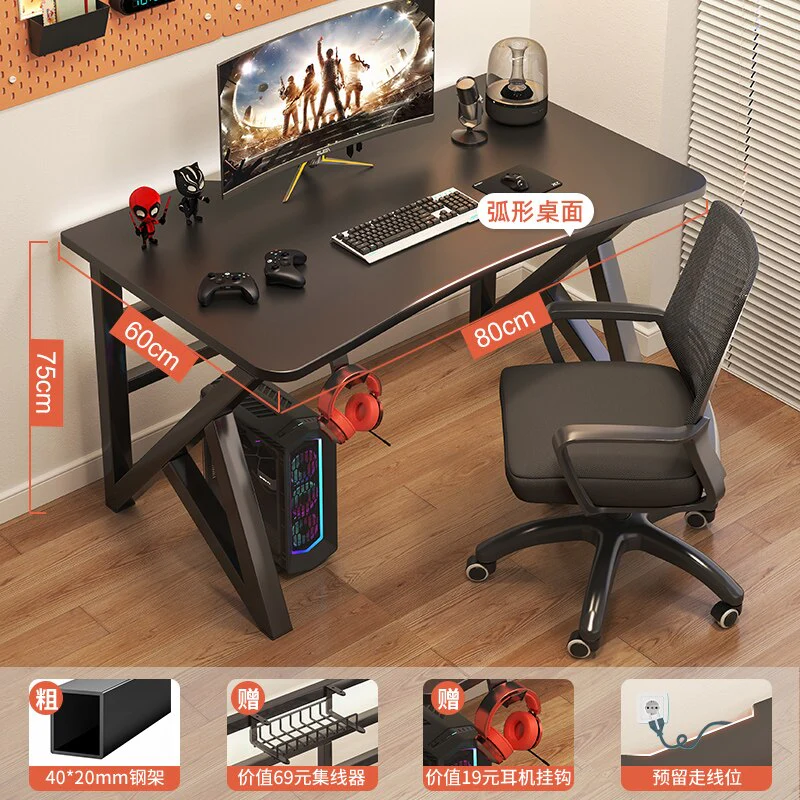Blog
Shop Ergonomic Desks for Long Study Sessions
When it comes to setting up a comfortable and productive study space, one of the most important pieces of furniture you’ll need is an ergonomic desk. Whether you’re a student preparing for exams or someone working from home, an ergonomic desk is essential for maintaining good posture, reducing strain, and supporting long study sessions. Here’s why investing in an ergonomic desk is a smart choice and how to find the right one for your needs.
Why Choose an Ergonomic Desk?
Spending long hours at a desk can lead to discomfort, fatigue, and even long-term health issues if your workspace isn’t set up correctly. An ergonomic desk is specifically designed to minimize strain on your body, particularly your back, neck, and wrists. Here are some reasons why you should consider upgrading to an ergonomic desk:
- Improved Posture: Ergonomic desks help promote proper posture by allowing you to adjust the height and angle of your desk to suit your body’s natural alignment. This reduces the chances of slouching, which can lead to back and neck pain.
- Enhanced Comfort: With features like adjustable height, built-in storage, and smooth surfaces, ergonomic desks offer a more comfortable study or work environment. You can set up your workspace so that it’s customized to your specific needs.
- Increased Productivity: A comfortable study area enhances focus and efficiency. By creating a workspace that’s ergonomically designed, you reduce distractions from discomfort and fatigue, allowing you to stay engaged for longer periods.
- Prevention of Health Issues: Long hours of studying or working at a desk can cause repetitive strain injuries like carpal tunnel syndrome, back pain, and neck strain. An ergonomic desk reduces the risk of these issues by supporting your body’s natural posture and movement.

Key Features to Look for in an Ergonomic Desk
When shopping for an ergonomic desk, there are several important features to consider. These features ensure your desk is not only comfortable but also supports your health during long study sessions.
1. Adjustable Height
One of the most important features of an ergonomic desk is the ability to adjust its height. Adjustable desks allow you to alternate between sitting and standing, which is crucial for reducing the strain on your body caused by prolonged sitting.
- Sit-Stand Desks: These desks can be adjusted to different heights, allowing you to switch between sitting and standing positions easily. This flexibility promotes better posture and circulation.
- Manual or Electric Adjustment: Some desks have manual adjustment mechanisms, while others are powered by motors for smoother, effortless changes in height.
2. Spacious Work Surface
A spacious work surface is essential for spreading out your study materials, books, and digital devices. An ergonomic desk should have enough space to keep everything you need within easy reach while avoiding clutter.
- Larger Surface Area: Opt for a desk that offers ample space for your laptop, textbooks, notebooks, and even personal items like a coffee cup or lamp.
- Organized Layout: Look for desks with built-in organizers or compartments to help keep your study area neat and organized.
3. Cable Management
A clutter-free desk is key to a more productive study session. Many ergonomic desks come with cable management features that allow you to keep your cords and cables organized and out of sight.
- Integrated Cable Trays: These trays help store cables under the desk, reducing mess and allowing you to focus on your tasks.
- Cable Clips and Grommets: These tools help route and secure your cables, so they don’t get tangled or cause distractions.
4. Sturdy Construction
Durability is important, especially if you plan on using the desk for long study sessions or working from home. Choose an ergonomic desk made from high-quality materials like wood, metal, or sturdy composite materials.
- Stable Frame: Look for a desk with a stable frame that won’t wobble or shake when typing or writing.
- Durable Surfaces: A sturdy surface is essential for supporting your study materials, monitors, and other equipment without warping or damaging over time.
5. Built-in Storage
Storage is another crucial element to consider when choosing an ergonomic desk. Look for desks with drawers, shelves, or additional compartments that help keep your study supplies organized and within reach.
- Drawer Units: Built-in drawers are useful for storing pens, paper, and personal items while keeping your work surface clutter-free.
- Shelf Storage: Some ergonomic desks come with overhead or side shelves to store books, files, or other essential items.
Types of Ergonomic Desks
Ergonomic desks come in a variety of styles and designs to suit different needs. Depending on your space and preferences, you can choose from the following options:
1. Standing Desks
Standing desks allow you to alternate between sitting and standing throughout the day, which helps reduce the negative effects of prolonged sitting. Some models have electric motors that adjust the height with the push of a button, while others require manual adjustment.
- Benefits: Standing desks can help improve posture, increase energy levels, and reduce the risk of health problems like back pain or poor circulation.
2. Corner Desks
Corner desks are ideal for small spaces or rooms where maximizing space is important. These desks fit into corners and offer plenty of work surface without taking up too much room. Many corner desks come with additional storage options to help keep everything organized.
- Benefits: They are great for creating an efficient workspace that maximizes the use of available room, especially if you need to work with multiple devices or materials at once.
3. Compact Desks
If you’re limited on space, a compact ergonomic desk might be the best choice. These desks are smaller but still offer adjustable height features and a comfortable workspace for one person.
- Benefits: Compact desks are perfect for students who need a functional workspace in a dorm room, apartment, or shared space. Despite their smaller size, they still provide ergonomic support.
4. L-Shaped Desks
L-shaped desks are ideal for people who need a larger workspace or need to juggle multiple tasks at once. They can be placed in a corner to save space while offering a wide surface area for your study materials, laptops, and additional equipment.
- Benefits: L-shaped desks allow for maximum surface area and often come with built-in storage to keep things organized.
Where to Shop for Ergonomic Desks
When looking for an ergonomic desk, consider shopping at furniture stores, online marketplaces, or specialty retailers that focus on office and study furniture. Here are some popular places where you can find a range of ergonomic desks:
- Online Retailers: Websites like Amazon, Wayfair, and Overstock offer a wide variety of ergonomic desks with detailed product descriptions and customer reviews to help you make an informed decision.
- Furniture Stores: Local furniture stores or chain retailers like IKEA and Office Depot often carry ergonomic desks in various styles and price ranges.
- Specialty Stores: For a higher-end ergonomic desk, you might want to check stores that specialize in ergonomic office furniture like Autonomous, Uplift Desk, or Vari.

Conclusion
Investing in an ergonomic desk is one of the best ways to ensure comfort, productivity, and health during long study sessions. By choosing a desk with features like adjustable height, spacious work surfaces, built-in storage, and cable management, you can create a study area that meets all your needs. Whether you’re a student preparing for exams or someone who works from home, an ergonomic desk will support your body and help you stay focused and productive. So, shop around, find the perfect desk for your space, and transform your study area into a comfortable and efficient workspace.


